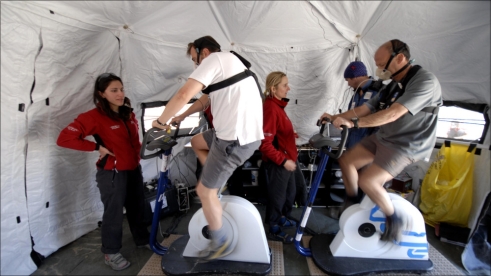A new Xtreme Alps research group abstract has been accepted and recently published by the British Journal of Anesthesia. The Xtreme Alps research group is a collaboration of doctors and nurses from both University of Southampton, Southampton Hospital, University College London and University College London Hospital.
The research undertaken looked at five healthy subjects at both sea level and at an altitude of 4559 meters. Researchers measured inspiratory and expiratory oxygen levels to enable them to calculate systemic oxygen extraction at both rest and at peak exercise. Before testing took place at altitude the subjects were given 5-7 days to acclimatise to their new surroundings.
Samples were taken from the subjects at both rest and during exercise and processed using a blood gas analyser. For the exercise portion, the subjects performed 3 minutes of unloaded cycling, at which point the load steadily increased until the subject reached exhaustion. During both unloaded and ramped exercise 1 ml blood samples were taken simultaneously from both the arterial and venous catheters. A final sample was taken 1 minute after the completion of the exercise.
Results showed that although hypoxemia (abnormally low level of oxygen in the blood) was seen in the subjects at altitude, there was no change in the oxygen extraction ratio from that seen at sea level. This suggests that the body�s cells do not compensate for the low oxygen levels by extracting more oxygen from the blood.
The open access abstract can be found here
Systemic oxygen extraction during exercise at high altitude
D. S. Martin; A. Cobb; P. Meale; K. Mitchell; M. Edsell; M. G. Mythen; M. P. W. Grocott; British Journal of Anaesthesia 2014;doi: 10.1093/bja/aeu404




